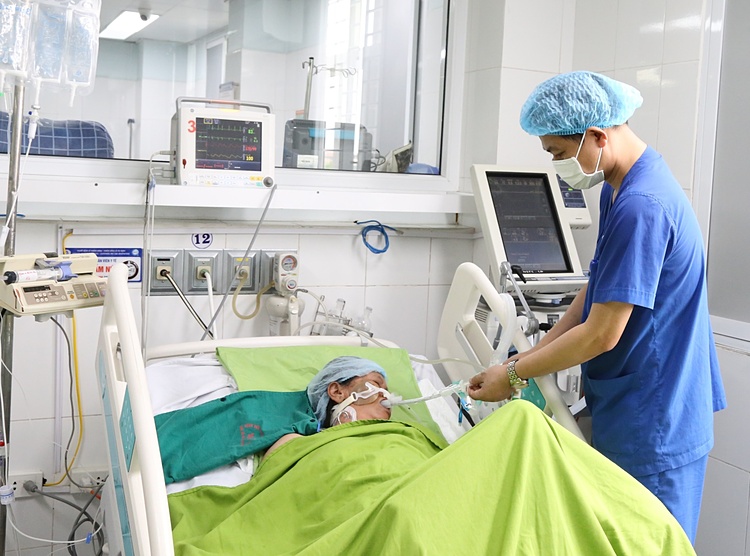On 8/7, Phu Tho General Hospital reported admitting a 65-year-old woman in critical condition. She presented with a 39°C fever, immeasurable blood pressure, and was unconscious, requiring ventilation. Doctors diagnosed her with heatstroke and immediately began treatment, which included cooling her body with warm compresses, administering intravenous fluids, and providing mechanical ventilation.
After about 6 hours, the patient showed signs of improvement and has now recovered.
 |
Doctors treating the patient. Photo: Hospital provided |
Doctors treating the patient. Photo: Hospital provided
Northern provinces like Hanoi, Phu Tho, and Ninh Binh have recently experienced intense heat and still air, increasing discomfort.
Dr. Nguyen Duc Lich of the Intensive Care - Toxicology Department explained that heatstroke is a serious medical condition occurring when the body temperature rises uncontrollably, usually due to prolonged exposure to high temperatures or strenuous physical activity in hot weather.
Key indicators of heatstroke include a body temperature of 40°C (104°F) or higher and the failure of the body's cooling mechanisms, such as sweating. Without prompt treatment, it can lead to confusion, unconsciousness, multiple organ damage, or even death.
Fortunately, this patient was brought to the hospital in time, enabling a quick recovery and minimizing organ damage. Doctors advise people to avoid strenuous physical activity, especially during hot weather, and limit going outside between 10 a.m. and 5 p.m.
Staying hydrated is crucial. Drink water every hour to compensate for fluid loss. Those working outdoors may need 3-4 liters of water daily and should supplement with electrolytes to prevent acute renal failure due to dehydration. A nutritious diet with fruits or fruit juices is essential for adequate vitamin intake and a strong immune system.
Outdoor workers should use protective gear and take measures to prevent heatstroke.
If someone exhibits signs of heatstroke, immediately move them to a shaded, cool area. Loosen their clothing, apply cool compresses, provide water or an oral rehydration solution, and promptly transport them to the nearest medical facility to address potential complications from dehydration and electrolyte imbalance.
Thuy Quynh












